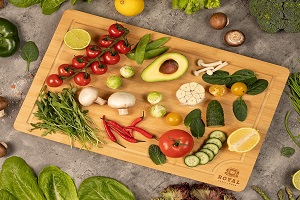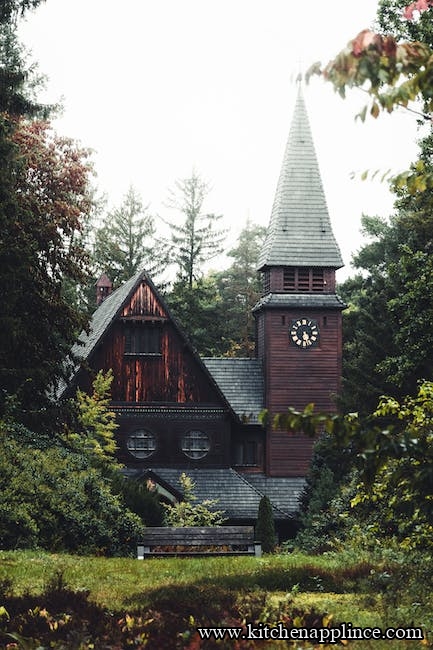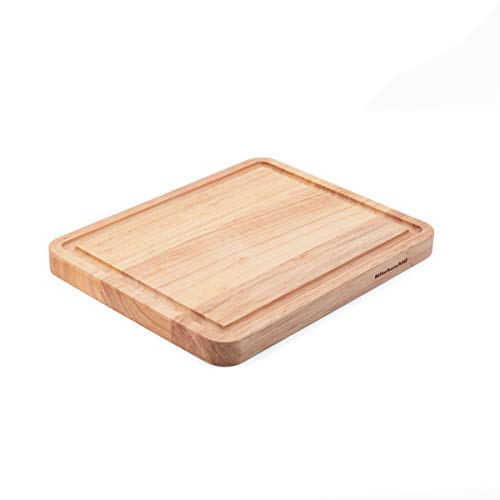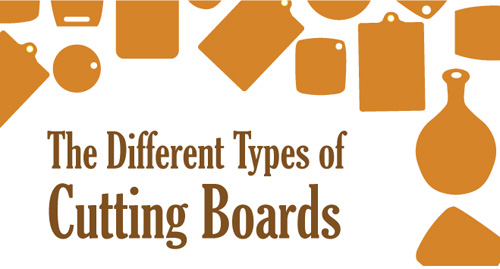Is White Oak Good For Cutting Boards? A Comprehensive Guide
White oak, a wood species known for its exceptional strength and versatility, has gained significant popularity as a material for cutting boards. In this comprehensive guide, we will delve into the world of white oak cutting boards, exploring their numerous advantages, unparalleled durability, hygiene benefits, and how they can add a touch of style to your kitchen. By the end of this article, you’ll understand why white oak should be your top choice for cutting boards.
Introduction to White Oak as a Cutting Board Material
White oak, scientifically known as Quercus Alba, is a hardwood native to North America. Its unique characteristics, such as a distinctive grain pattern and color variations ranging from pale yellow to light brown, make it an attractive choice for a variety of applications, including furniture and, of course, cutting boards.
White oak’s density and tight grain structure set it apart from other woods, making it highly resistant to wear and tear. This durability ensures that your white oak cutting board will serve you faithfully for years, even decades, with proper care.
Is White Oak Good For Cutting Boards?
Yes, White Oak is an excellent choice for making cutting boards. White Oak is a hardwood known for its durability and resistance to moisture, making it a popular wood species for various woodworking projects, including cutting boards. Here are some reasons why White Oak is a good option for cutting boards:
- Hardness: White Oak is a relatively hard wood, which means it can withstand the wear and tear of cutting and chopping without easily showing deep gouges or scratches. This hardness also makes it less likely to develop knife marks compared to softer woods.
- Durability: White Oak is highly durable and has a natural resistance to decay and insect infestations. This durability ensures that your cutting board will have a longer lifespan.
- Moisture Resistance: White Oak has tight grain patterns and contains natural oils that make it resistant to moisture absorption. This feature helps prevent the wood from warping, cracking, or splitting when exposed to water, which is a common occurrence with cutting boards.
- Odor and Taste Neutrality: White Oak has a relatively neutral aroma and taste, so it won’t impart unwanted flavors or odors to your food, making it a good choice for cutting boards used for various types of cuisine.
- Easy Maintenance: White Oak cutting boards are relatively easy to maintain. Regular oiling with food-grade mineral oil or butcher block oil helps keep the wood hydrated and prevents it from drying out and becoming brittle.
- Aesthetics: White Oak also has an attractive appearance with a light to medium brown color and distinctive grain patterns. It can add a touch of natural beauty to your kitchen.
When making a White Oak cutting board, it’s essential to choose food-safe finishes and avoid any toxic substances that may harm your health. Additionally, proper cleaning and maintenance are crucial to ensure the longevity and hygiene of your cutting board. Overall, White Oak is a great choice for those looking to create a durable and functional cutting board that will last for years.
Advantages of Using White Oak Cutting Boards
1. Natural Beauty
One of the primary reasons people opt for white oak cutting boards is their natural beauty. The wood’s elegant appearance and rich, warm tones add a touch of sophistication to any kitchen. Unlike plastic or bamboo, white oak exudes a timeless charm that only gets better with age.
2. Durability Beyond Compare
White oak reigns supreme in the realm of cutting board materials due to its exceptional durability. It can withstand heavy daily use without showing signs of wear and tear, thanks to its robust composition. This means fewer worries about your cutting board warping, cracking, or becoming unsightly over time.
3. Eco-Friendly Choice
If you’re environmentally conscious, white oak is an excellent choice. It’s a sustainable option, as white oak trees are readily available and can be responsibly harvested. Plus, the longevity of white oak cutting boards means you won’t need to replace them frequently, reducing waste.
Hygiene: The Importance of Safe Food Preparation
Ensuring food safety is paramount in every kitchen, and white oak excels in this regard. It possesses natural antimicrobial properties that inhibit the growth of bacteria on its surface. This makes it an ideal choice for cutting boards, where hygiene is non-negotiable.
Using a white oak cutting board helps minimize the risk of cross-contamination, ensuring that your meals are prepared in the safest possible environment. Regular cleaning and maintenance will keep your white oak cutting board in tip-top hygienic condition.
White Oak Cutting Boards: A Stylish Addition to Your Kitchen
Beyond functionality, white oak cutting boards are a stylish addition to any kitchen. Their elegant appearance complements a wide range of kitchen decor styles, from rustic to modern. Here are some creative ways to incorporate them into your kitchen:
- Use a white oak cutting board as a serving platter for appetizers or charcuterie.
- Hang your white oak cutting board on the wall as a decorative element.
- Showcase it on your countertop as a statement piece when not in use.
How to Care for Your White Oak Cutting Board
To ensure the longevity of your white oak cutting board and maintain its hygienic properties, follow these care tips:
- Regular Cleaning: Wash your cutting board with warm, soapy water after each use. Rinse thoroughly and allow it to air dry.
- Oil It Up: Apply food-grade mineral oil to your white oak cutting board regularly to prevent it from drying out and cracking.
- Remove Stains: If stains occur, create a paste with baking soda and water and gently scrub the stained area. Rinse and dry thoroughly.
- Eliminate Odors: To remove odors, sprinkle your cutting board with coarse salt, then rub it with a lemon half. Rinse and dry.
Conclusion: Making the Right Choice
In conclusion, white oak stands as an exceptional choice for cutting boards. Its natural beauty, unmatched durability, and hygienic qualities make it the top pick for those seeking both functionality and style in their kitchens. By choosing a white oak cutting board, you not only elevate your culinary experience but also make an environmentally responsible choice.
Embrace the timeless elegance of white oak, and let it be a staple in your kitchen for years to come. Upgrade your kitchenware with a white oak cutting board and experience the perfect blend of form and function.




